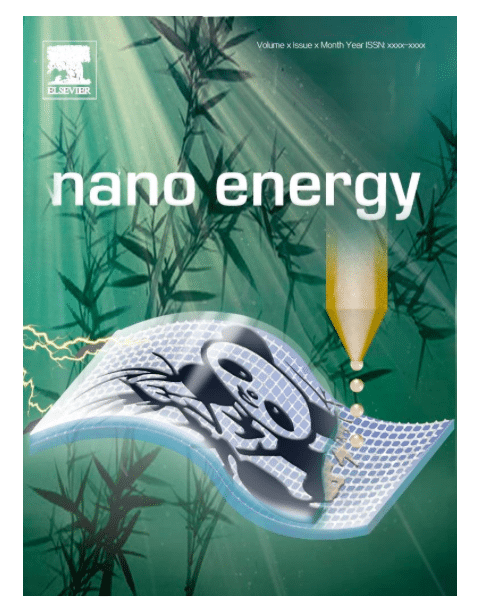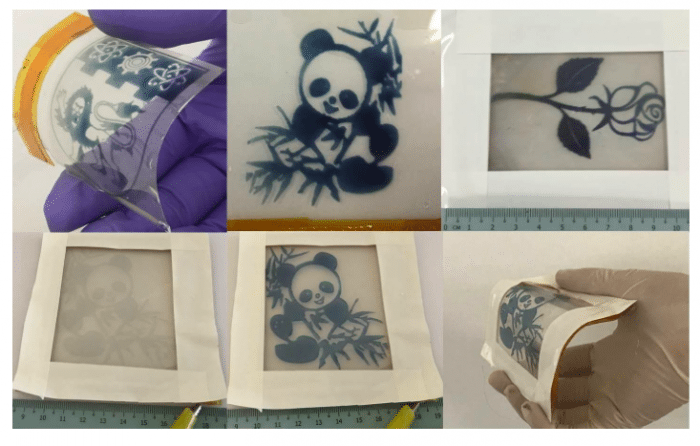
Traditional displays include cathode ray tube, flat panel display, liquid crystal display (LCD), and light-emitting diode (LED), which require continuous operating voltage to function. Most of these devices are expensive and require enormous amounts of energy. Additionally, they also cause some damage to the user’s eyes with prolonged usage either close-up or far away.
As a promising display device, the electrochromic display presents information via intercalation and extraction of small ions when the external electrical field is applied. The electrochromic device does not consume energy to maintain the display once activated, the display information exchange process can also be realized with a very little input energy. Electrochromic display offers readability under wide angles, highly diffusive reflective properties, and good coloration memory effects.
Moreover, because of the non-light emissive characteristic, the electrochromic display is friendly to human eyes. Therefore, the electrochromic display has broad applications in energy efficient displays, e-books, e-cards and multifunctional electronic devices.
Although electrochromic display represents a promising trend in the development of smart and energy efficient display devices, is it still a challenge to realize a highly flexible electrochromic display with high contrast and fast switching. Nano Energy has recently published an article on “Direct inkjet-patterning of energy efficient flexible electrochromics” which is a joint publication between the groups of Prof. Pooi See Lee from Nanyang Technological University, Singapore and Prof. Shlomo Magdassi from Hebrew University of Jerusalem, Israel. The team works together in the consortium Singapore-HUJ Alliance for Research and Enterprise (SHARE) under the Campus for Research Excellence and Technological Enterprise (CREATE), funded by the National Research Foundation (NRF), Singapore.
The lead author, Dr. Guofa Cai explained that the facile inkjet printing technology was used to prepare high-quality electrochromic WO3-PEDOT:PSS patterns on flexible PEDOT:PSS/silver grid/PET substrate, which was then assembled into flexible electrochromic displays. This type of display could dynamically show different color stages from transparent, light blue to deep blue due to the electrochromic property of the composite ink. Inkjet printing is a precise and non-contact direct write technology with many advantages such as high-resolution patterns, efficient usage of materials, low cost, process simplicity and being applicable to a variety of hard or flexible substrates (see Figure 1). In addition, it can be used for large-scale production in the industry when integrated with the roll-to-roll technology.

Figure 1: The schematic diagram of inkjet printing technology for inkjet-patterning of an electrochromic display. Reproduced with permission.[1] Copyright 2018, Elsevier.
Among various flexible transparent electrodes, a silver grid transparent electrode is of particular interest because of its high conductivity and transparency realized through percolating grids. However, silver-based (e.g., nanowires, grids, etc.) transparent electrodes suffer from poor cycling stability for electrochromic applications due to the oxidation and corrosion of silver under positive potentials in the electrolyte. The authors found that of the PEDOT:PSS can act as a passivation layer that protects the Ag grid from oxidation and corrosion, which could improve the electrode stability. In addition, the synergetic chromic effect of the PEDOT:PSS and WO3could enhance the contrast of the display information. Moreover, a conductive network formed by PEDOT:PSS among the WO3nanoparticles could speed up the information switching process between different states.
Lee et. al demonstrate that the inkjet printed flexible electrodes could achieve an optical modulation of 43% only need 1.2´10-3mWh cm-2 electric energy. In addition, the inkjet printed flexible film exhibits multiple color stages from transparent to deep blue, fast switching speed (coloration/bleaching time of 2.4/0.8 s), and high coloration efficiency (42.1cm2C-1, a high value indicates that the electrochromic display exhibits large contrast with a small energy consumption).
The printed flexible electrochromic film shows the best electrochemical stability (up to 10,000 cycles), in agreement with its superior conductivity and transmittance, respectively. Additionally, a robust mechanical stability was also achieved by the printed flexible films (up to 5,000 bending cycles). Larger area flexible patterned electrochromic displays with size more than 11 × 9 cm2were assembled and exhibited excellent electrochromic performance. All the inkjet-printed flexible displays exhibited large color contrasts and fast switching speed (see Figure 2).
Moreover, the displays exhibited robust electrochromic and flexible performances at the flat state and even during the reversible bending process. The electrochromic display can maintain information even when disconnected from the power source, demonstrating it as an energy-efficient device and promising candidate for modern energy efficient display, such as e-book, e-skin etc.

Figure 2: Photographs of the inkjet-printed logo, panda, rose, based flexible films and displays in the bleached, colored and bent states (after being switched to colored state), respectively. Reproduced with permission from Elsevier from: https://doi.org/10.1016/j.nanoen.2018.04.017.
These findings are described in the article entitled Direct inkjet-patterning of energy efficient flexible electrochromics, recently published in the journal Nano Energy. This work was conducted by Pooi See Lee, Guofa Cai, Xing Cheng, Alvin Wei Ming Tan, Shaohui Li, Alice Lee-Sie Eh and Dace Gao from the Nanyang Technological University, and Shlomo Magdassi and Michael Layani from The Hebrew University of Jerusalem.








